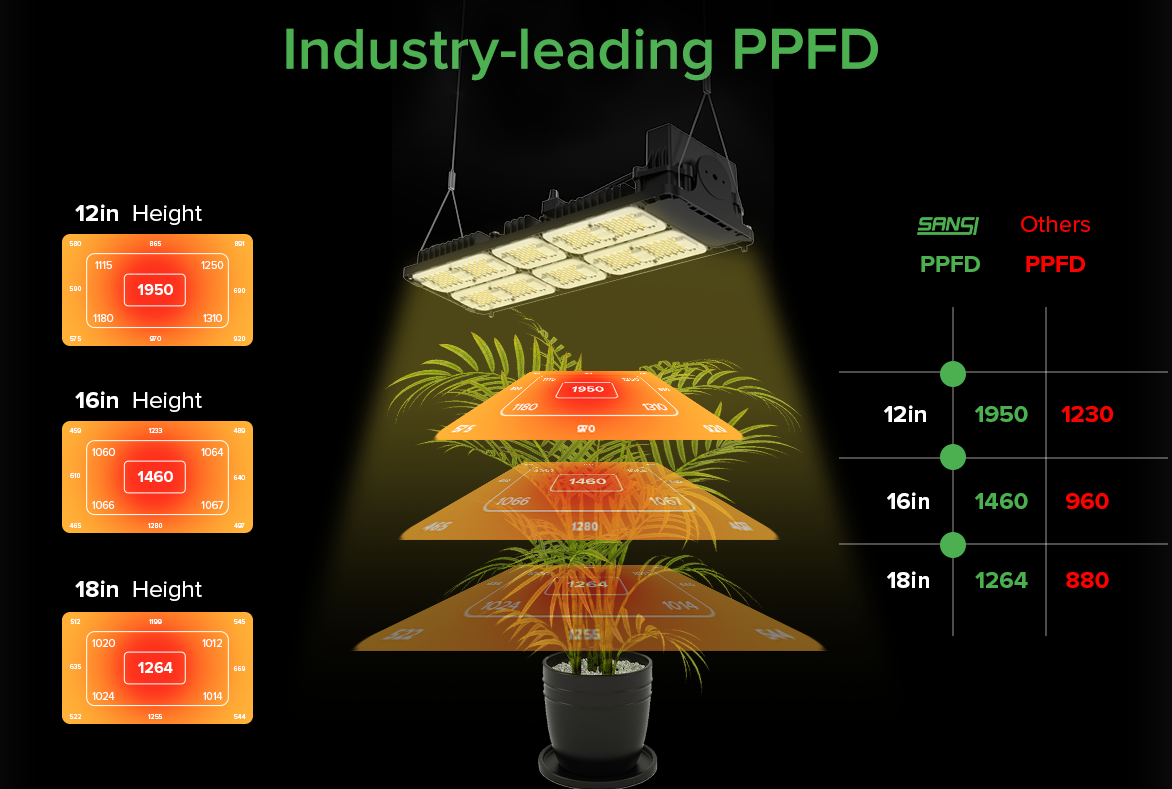Sansi LED: Sustainable LED Lighting and Integrated LED Display
Delivering premium and professional LED Display, LED Lighting, Smart City Integration solutions, trusted by over 60,000 companies worldwide everyday. From industrial lighting to commercial lighting, from outdoor advertising to XR & VR production, Sansi LED greatly improves the quality and sustainability of your business with 30 years of expert experiences.
With the increasing interest in indoor planting, LED grow lights have become an important lighting tool widely used in indoor flower cultivation, vegetable cultivation, vertical farming, and other fields. When choosing the appropriate grow light, we often hear a concept named as PPFD. So, what is the PPFD and why do we need to consider it when selecting grow lights?

Let's understand the meaning of PPFD firstly. PPFD stands for Photosynthetic Photon Flux Density, which refers to the photon flux incident on the plant canopy per unit area and is used to measure the light intensity on the plant canopy. The unit of PPFD is μmol/s/m². Therefore, the PPFD value actually tells us the density of light energy per unit area, or in other words, how many photons the plant canopy can receive per second.
So why do we need to consider the PPFD value when choosing grow lights? This is because light intensity plays a crucial role in plant growth and development. Light is the energy source for photosynthesis in plants and can be converted into the chemical energy needed to support their life activities. Different plants have different light requirements at different growth stages. For some plants that require a high light intensity, such as tomatoes and peppers, adequate light is essential for their growth. Insufficient light can result in slow or stunted growth. Indoor plant lights are the primary source of light for indoor cultivation, so the light intensity of the plant lights needs to meet the growth requirements of the plants.
PPFD can help us determine whether the light intensity of the grow lights is suitable for the growth requirements of the plants. Different plants have different light requirements. Some plants that require high light intensity, such as tomatoes and peppers, generally need higher PPFD values, usually around 600-1000 μmol/s/m². On the other hand, shade-tolerant vegetables and foliage plants, such as moss plants and ferns, have relatively lower light requirements, which can be satisfied with PPFD values around 200-400 μmol/s/m².
Different crops have different light requirements at various growth stages. For example, during seed germination and seedling stages, plants have lower light requirements, and lower PPFD values are sufficient. However, during the vegetative growth and flowering stages, plants require higher light intensity, and higher PPFD values are needed to provide sufficient light energy for photosynthesis.
Some people may misunderstand that the larger the PPFD is, the better grow light is. However, this is not always the case. Grow lights with too high PPFD values can lead to excessive light intensity, causing leaf burns and even excessive photosynthesis. Therefore, when choosing grow lights, we need to consider the characteristics of the plants and the requirements of the growing environment.
-
NO DATA
